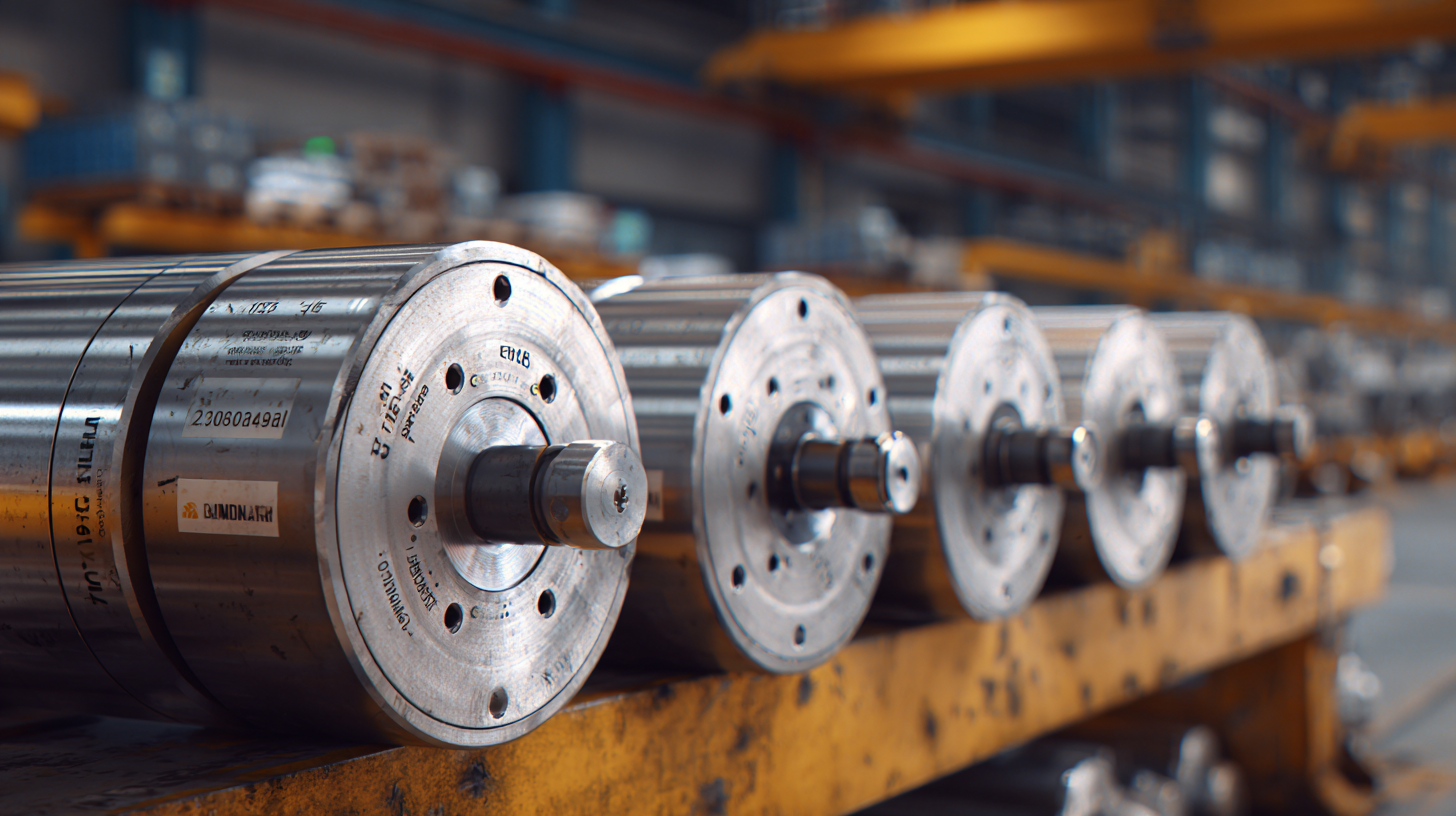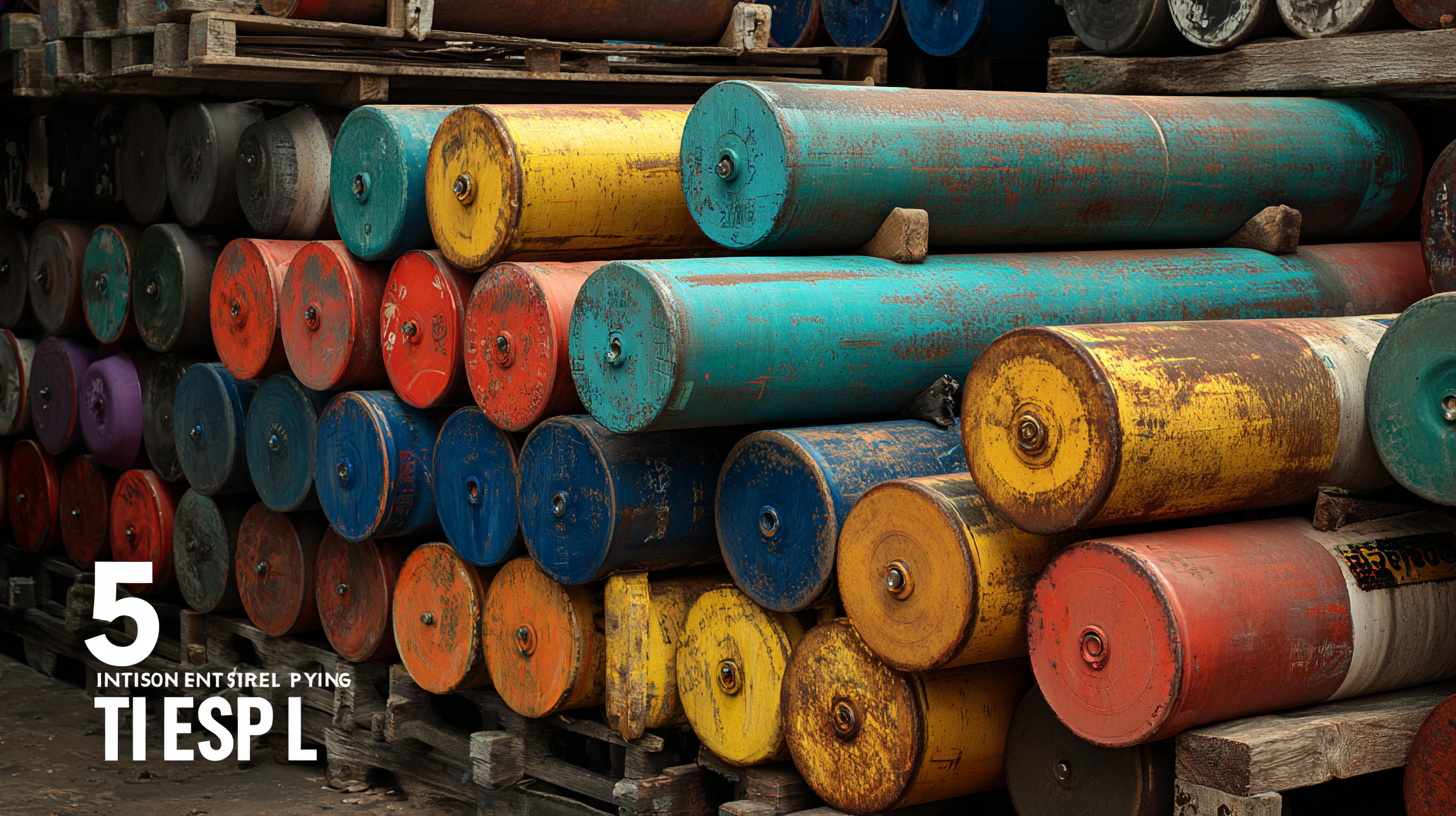In the rapidly evolving industrial sector, the choice of equipment can significantly impact operational efficiency and productivity. Among these essential components, Industrial Cylinders play a crucial role in various applications, from manufacturing to automation. According to the latest market analysis by Research and Markets, the global hydraulic cylinder market is projected to reach $16.2 billion by 2025, growing at a CAGR of 4.5%. This growth emphasizes the importance of selecting high-quality industrial cylinders that not only comply with international trade certifications but also meet specific operational requirements. As industries strive for enhanced efficiency and sustainability, understanding the intricacies of industrial cylinders—including material types, design considerations, and performance standards—becomes paramount. In this blog, we will explore five essential tips for choosing the best industrial cylinders to maximize efficiency in your operations.

When it comes to selecting industrial cylinders, understanding the various types available is crucial for optimizing efficiency. Industrial cylinders are predominantly classified into two main categories: pneumatic and hydraulic. Pneumatic cylinders utilize compressed air to create motion, making them ideal for environments where speed and cleanliness are paramount. They are often lighter and more straightforward to maintain, significantly contributing to operational efficiency in industries such as packaging and assembly.
On the other hand, hydraulic cylinders operate using pressurized fluid, providing greater force and power for demanding applications. These cylinders are suitable for heavy-duty operations commonly found in construction equipment and manufacturing machinery. It’s essential to consider the specific requirements of your application, including force needed, speed, and environmental factors, when choosing between these two types. Additionally, variations such as double-acting, single-acting, and telescopic cylinders offer further options tailored to specific tasks, allowing businesses to enhance productivity and safety in their operations.
When selecting industrial cylinders for your operations, several key factors are essential to ensure maximum efficiency. First, consider the cylinder's material and construction. High-quality materials can enhance durability and performance, making them suitable for demanding environments. It's crucial to assess the working pressures and temperatures your cylinders will face, as this will dictate the choice of material and design. Opting for cylinders that offer superior resistance to wear and corrosion can significantly extend their lifespan and reduce maintenance costs.

Another important aspect is the cylinder's size and capacity. Proper sizing ensures that the cylinder can handle the required loads while maintaining optimal performance. It's advisable to calculate the necessary force and stroke based on your application to avoid underperformance or potential failure. Moreover, efficiency can be further maximized by integrating smart technologies that allow for real-time monitoring and adjustments, especially in the context of Industry 4.0 and cyber-physical systems. By addressing these factors, businesses can select the best industrial cylinders tailored to their specific operational needs.
When it comes to selecting the right industrial cylinder, understanding the differences between single-acting and double-acting cylinders is crucial for optimizing efficiency in your operations. Single-acting cylinders operate on air pressure in one direction only, relying on a spring or gravity to return to their original position. This makes them simpler and typically more cost-effective, ideal for applications that do not require constant cylinder movement.
On the other hand, double-acting cylinders allow for power in both extension and retraction, making them more versatile for tasks requiring repeated strokes. They provide more control and can handle higher loads, essential in demanding environments. To make the best choice for your operation, consider the specific requirements of your application, including load capacity and cycle frequency.
As you assess your options, remember to keep these essential tips in mind: evaluate the workspace constraints, weigh the operational needs, and assess the overall efficiency requirements. By doing so, you can ensure that the cylinder you choose will enhance your operations and deliver maximum performance.
| Criterion | Single-Acting Cylinder | Double-Acting Cylinder |
|---|---|---|
| Power Stroke | Pull only | Pull and push |
| Complexity | Simple design | Complex design |
| Cost | Generally lower | Generally higher |
| Speed | Moderate speed | Higher speed potential |
| Efficiency | Less efficient for continuous operation | More efficient for repetitive tasks |
| Use Case | Ideal for lifting applications | Suitable for pushing and pulling applications |
When it comes to choosing the right industrial cylinders, material selection plays a crucial role in determining both longevity and performance. The material used can affect not only the cylinder's durability but also its efficiency under various operating conditions. For instance, cylinders made from high-strength steel can withstand higher pressures and temperatures, making them ideal for heavy-duty applications.
One essential tip is to consider the environmental conditions in which the cylinders will operate. If corrosive substances or high temperatures are involved, materials such as stainless steel or specially coated alloys should be prioritized. This selection can significantly reduce maintenance needs and extend the lifespan of the cylinders.
Another important aspect is to evaluate the specific operational requirements. Different applications may demand various material properties. For example, if lightweight and high mobility are essential, aluminum cylinders could be a suitable choice despite their lower pressure ratings. Always align the material choice with the cylinder's intended use to achieve maximum efficiency and performance.

Maintaining industrial cylinders is crucial for ensuring maximum efficiency and extending their lifespan. One of the key maintenance tips is conducting regular inspections and preventative maintenance checks. This includes examining seals for wear and tear, checking fluid levels, and ensuring that all components are functioning correctly. By identifying and addressing potential issues early, you can prevent costly downtime and enhance the overall performance of your machinery.
Another vital aspect of maintenance is adhering to the manufacturer’s specifications regarding lubrication and replacement intervals. Using the right type of lubricant and ensuring that it is applied regularly can significantly reduce friction and wear on cylinder components. Additionally, investing in high-quality replacement parts when needed reinforces the reliability of the equipment.
Keeping the cylinder and its components clean is equally important, as dirt and debris can lead to blockages and inefficiencies. With proper attention to these maintenance strategies, industrial cylinders can operate at peak efficiency for longer periods.